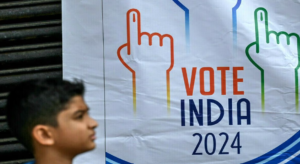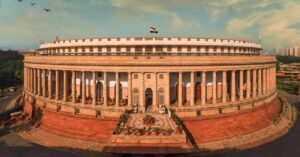A.G. Noorani is nothing if not prolific. In his latest book, The RSS: A Menace to India, we have another tome of over 500 pages with its contents diligently distilled. It is also timely.
The topicality of the Rashtriya Swayamsevak Sangh (RSS) as a subject of study is evident. This is the second volume on it in English to be published in eight months. The first was an updated version of an earlier work by Walter Anderson and Shridhar Damle. It sought to test a set of prepositions by using a case-study approach of the organisation and its network of affiliates emanating from what it called a homogenising of society.
Noorani’s present work goes beyond the superstructure into the origins of the organisation and its progress through certain critical landmarks in the history of modern India, pre-and-post Independence. It brings on record the views of Dr. B.R. Ambedkar and Jawaharlal Nehru about the RSS and its objectives. It is comprehensive in its coverage. Particularly useful are the appendices and the documents therein.
The constitution of the RSS is reproduced in Appendix 2. The preamble spells out the organisation’s objectives, the first of these being:
‘to eradicate the fissiparous tendencies arising from the diversities of sect, faith, caste and creed and from the political, economic and provincial differences among Hindus’ and ‘to bring about an all-round regeneration of the Hindu Samaj.’
Similarly, the RSS prayer and oath which is administered to every entrant enjoins him to work for “the all-round greatness of Bharatvarsh by fostering the growth of my sacred Hindu religion, Hindu society and Hindu culture.”
The focus, thus, is on those who profess to be Hindus, who constitute 80% of our population. In other words, every fifth Indian—20% of the population—is beyond the stated ambit of the RSS and, therefore, supposedly beyond its prescriptive ideology.
Three questions logically arise here:
(a) Can the 80% of Indians who are Hindu become synonymous with 100% of Indians?
(b) Can the 20% of Indians who are non-Hindu be conflated with the 80% who are Hindu?
(c) What happens to the Constitution of India, its democratic structure, its principle of equality and charter of rights, including the citizen’s right to profess, practice and propagate her religion, and the duty of every citizen to value and preserve the rich heritage of our composite culture?
The answer to the first two questions is an emphatic NO, unless a hitherto unstated process of conversion in contravention of the constitution is sought to be initiated. The answer to the third is evident: the constitution remains the basic law of the land, is binding on all citizens and supersedes other affiliations.
The RSS has, over the years, developed public policy orientations and influence through the large number of its affiliates and by grafting and promoting Hindutva as a concept of cultural revitalisation and political mobilisation which, in the words of D.L. Sheth and Ashis Nandy, “seeks to subjugate and homogenise the ethnic pluralities by establishing the hegemony of an imagined cultural mainstream.” This has also generated social violence by some of its adherents.
These principles—depicting Indian nationalism in terms of the faith of the religious majority—have serious negative social and political implications for sections of the citizen-body and are in violation of the constitution. In this sense, it is detrimental to India as we know it, a denial of all that the freedom struggle stood for, a negation of the existential reality of a plural society, a camouflage for assimilation and homogenisation, a device for erasing the richness and diversity of our land, of converting civic nationalism into cultural nationalism and our liberal democracy into an ethnic one.
Jai Hind.
(Hamid Ansari is former vice president of India.)




